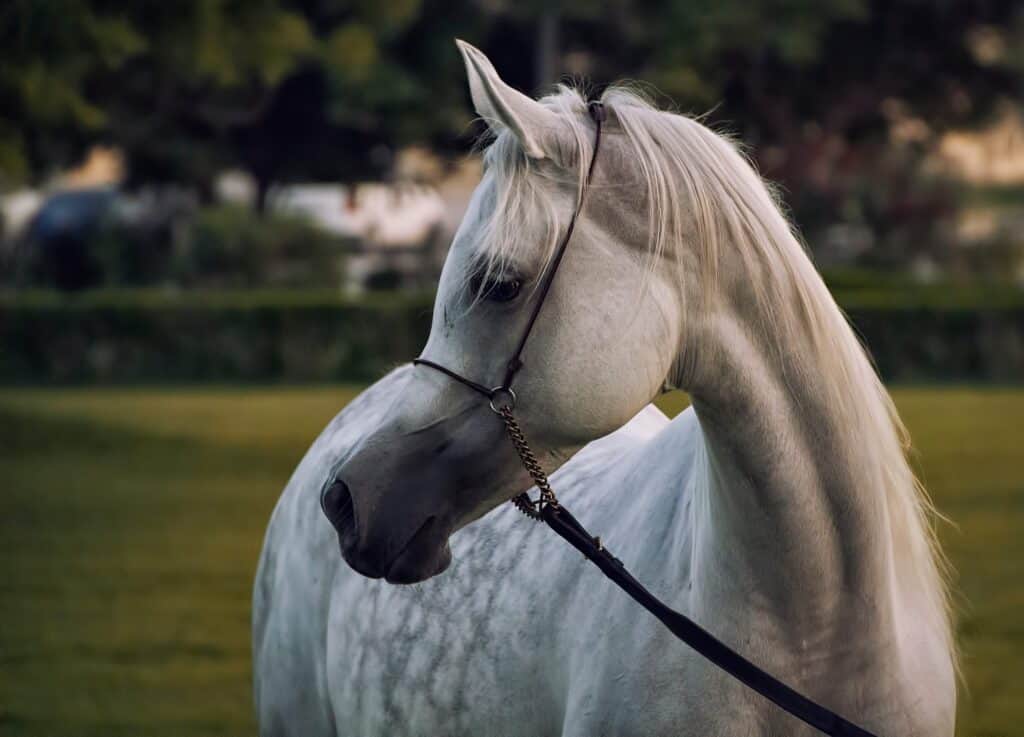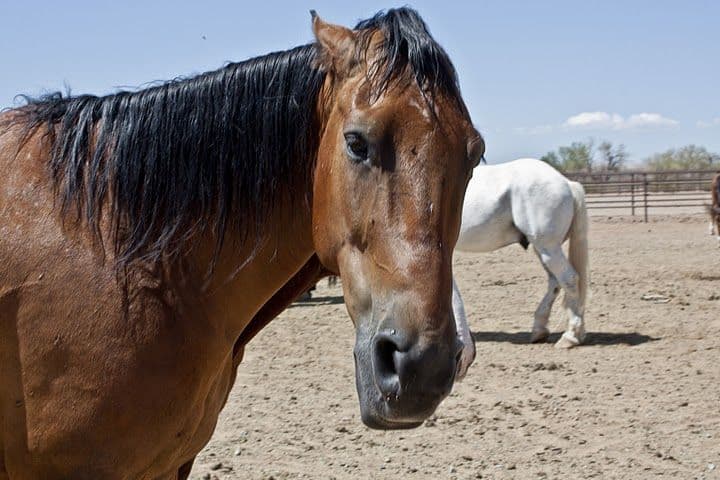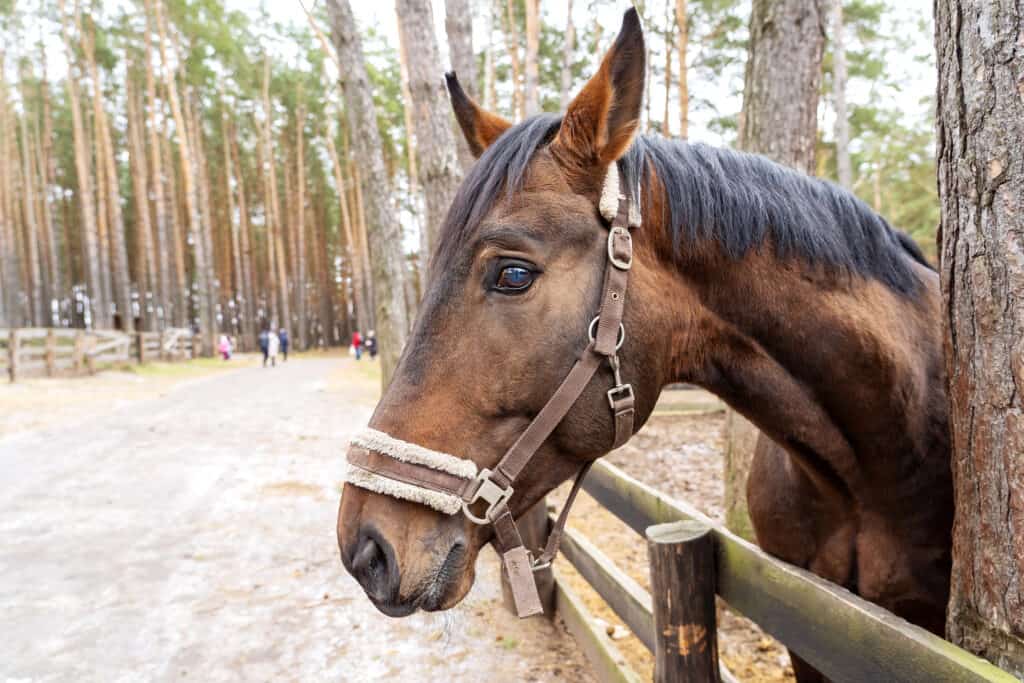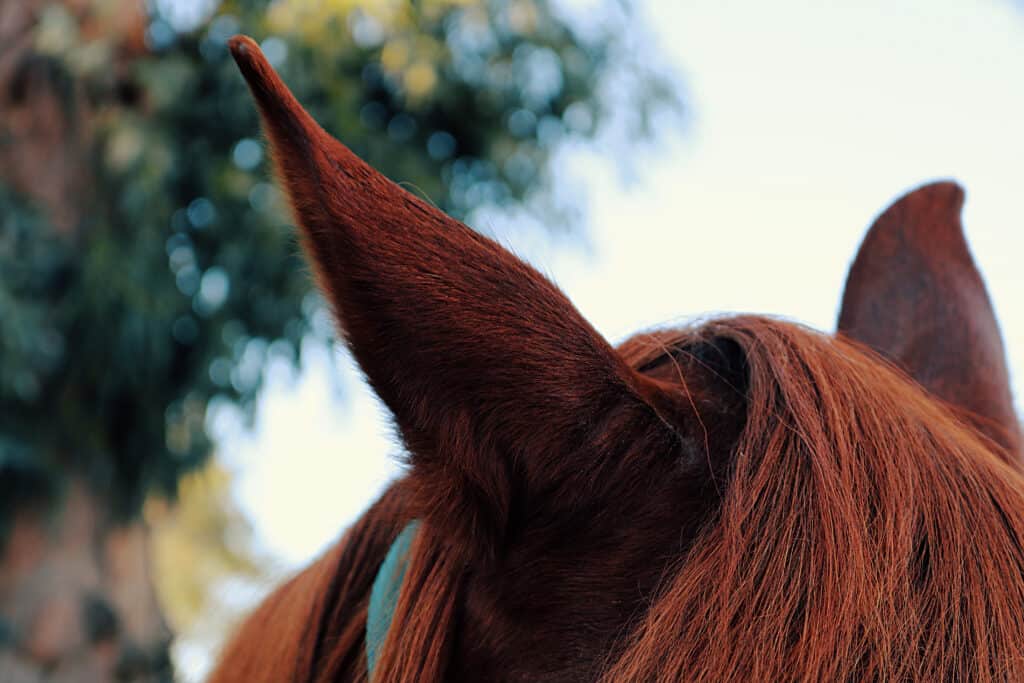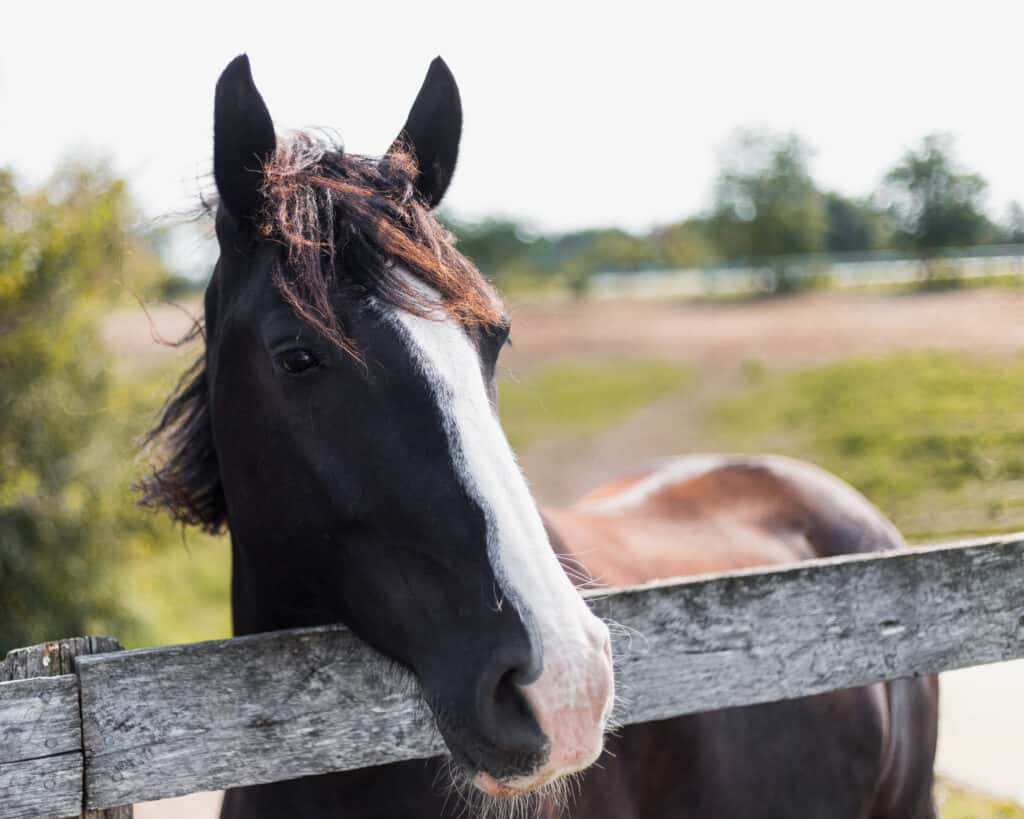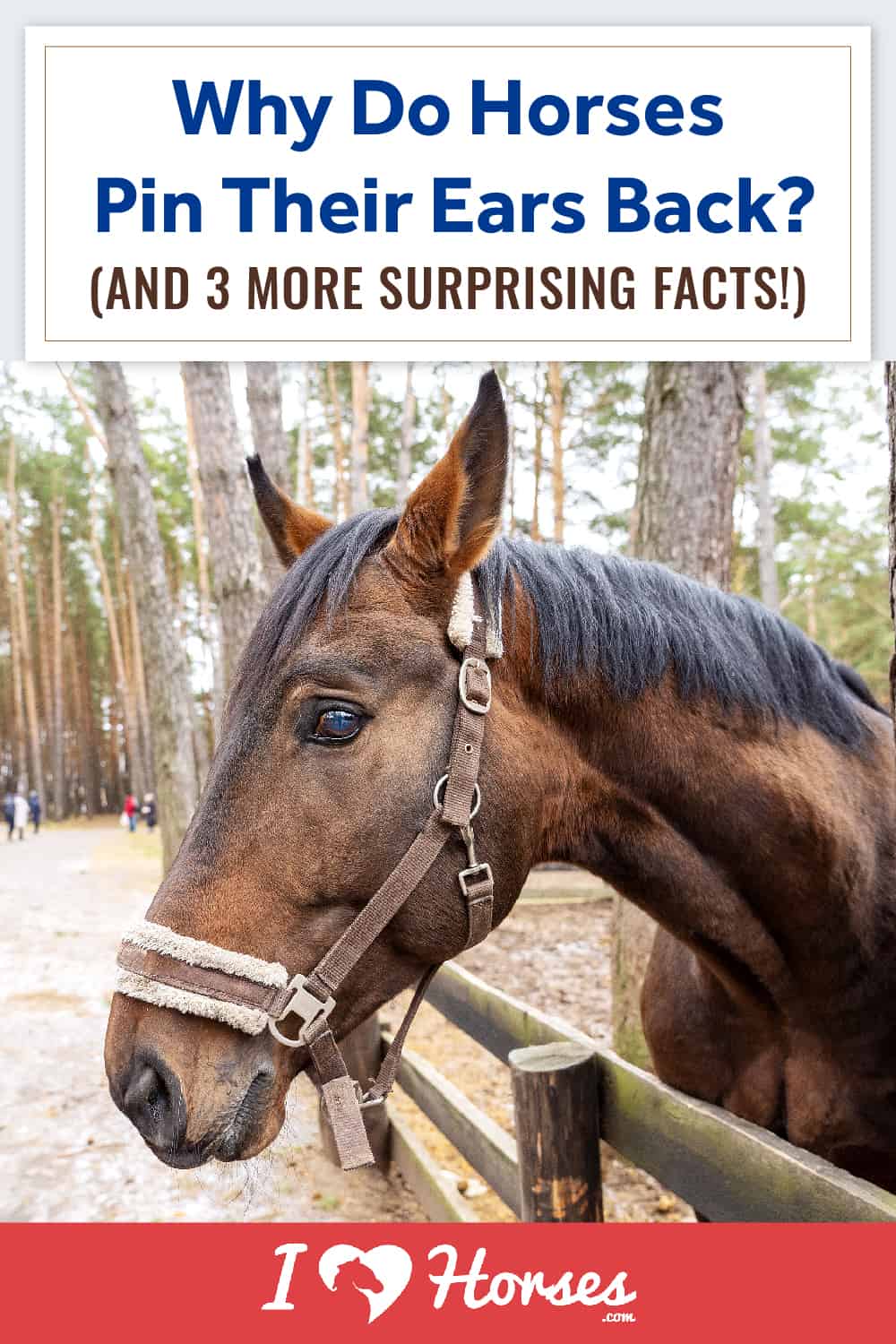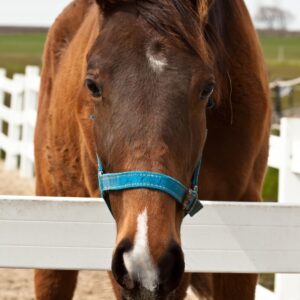Ask most anyone, "How do horses communicate?" And more often than not, the answer you get will refer to vocal communication, such as whinny, neigh, or snort. Horses have a more subtle way to communicate as well. They are masters at body language. Everything from the carriage of their heads, the position of the ears, and their tails' movement have a meaning. In this article, we will be discussing how horses use their ears to communicate.
To understand how horses communicate with their ears, we need to know some facts about their ears. Horses use 10 different muscles to move their ears 180 degrees. Each ear can move independently from the other. A horse's ears detect and determine the location of a sound and provide sensory information that allows the horse to recognize the sound. Horses can also use their ears to communicate emotions like interest, fear, anger, frustration, etc.
What a horse is trying to say with their ears depends on the situation. It is easy to simplify things and assume that ears forward mean danger or interest, and ears pinned back implies anger. But it isn't always so black-and-white. We have to take in the context of the whole situation to be able to read what our horses are trying to tell us.
Horse Ears Pinned Completely Flat:
The most common reason for ears pinned completely flat is a way to communicate, "Get out of my way, or leave me alone."
Something Hurts
It can also be a way of communicating to the rider, "something hurts." If your horse is pinning his ears back when you ride, the first thing to do is check if the saddle and bit are fitting correctly. Don't forget to check your saddle pad. A sticker in a saddle pad can be extremely uncomfortable. It may also be an indicator of other physical issues throughout the horse's body that are causing pain.
Not Enjoying the Training Session
Another reason your horse may pin their ears back is that they are basically not enjoying the training session. Maybe they feel too much pressure, or training aids are applied wrong or for too long. They can't say, "Hey, my muscles are sore from yesterday. Do we have to do this again?" So, they tell us the only way they know how, by pinning their ears.
Ears Turned Backward but Not Pinned:
When a horse's ears are turned backward, you can still see the opening of the ears. If the ear is pinned back tight against the head, you cannot see the opening.
Listening Behind Them or Focusing on the Rider
When a horse hears something behind him, he will turn his ears backward to focus on the sound. It can also mean the horse is focusing on his rider and listening for the next verbal command. Some trainers find it beneficial to hum or sing to a nervous horse to reassure him.
Deep Concentration or Herding Instinct
Ears backward can also indicate a deep concentration or herding instincts. Sometimes, but not always, a horse's ears will be backward when he is learning something new, or paying close attention to his job. Stallions that drive the herd from behind, and working cow horses who are chasing cattle, will also have their ears backward.
Ears Pricked Forward:
Can Indicate Multiple Meanings
Horse owners often want to think that a horse's ears pricked forward means a happy horse. But this isn’t always what ears pricked forward is communicating. Horses are capable of focusing on a single sound at a distance to determine what it is. If the sound comes from something threatening, they will stand with their heads up and their ears pricked forward. This alert pose is a warning to other horses that there is danger around.
In addition, a horse with its ears pricked forward can mean anything from, "That looks interesting" to, "What is that over there?" Or even, "I hear something scary. Everyone needs to take cover and be safe!"
Response to a Training Cue
Ears pricked forward can also be the response to a training cue, halter, and showmanship trainers use to teach the horse to stand at attention. They teach this because it shows a more desirable head and profile view of the horse to the judges.
One Ear Forward and One Ear Back, or Continuously Moving Backward and Forward:
A horse's ability to move each ear independently from the other allows them to listen in two different directions at once. This can be forward and backward, or off to the sides, forward and off to one side, or backward and off to one side.
If you are riding and your horse has one ear forward and one back, more than likely, they are paying attention to where they are going with one ear and focusing on the rider with the other. Some horses will do the same thing by continually flicking both ears backward and forward. They are saying, "I am watching where we are going. Is there anything else you want me to do?"
Final Thoughts
Horses are masters at reading body language. By understanding each other's body language, they can communicate with each other and warn each other of danger. If we learn to read our horse's body language, we can better understand what they are trying to communicate. With that being said, we have to remember that ear positions can have several different meanings. Therefore, we have to take in the full context of the situation to understand how to read our horses ears.
Did you learn something new about horse ears? Share this article with your fellow equestrians so they can learn a little more about their equine friends!
Horse Courses by Elaine Heney
- Listening to the Horse - The Documentary by Elaine Heney & Grey Pony Films
- Shoulder In & Out Training for better balance, bend & topline development with your horse
- Over 110+ Polework Exercises & Challenges to Download
- Dancing at Liberty & Creating Connection with Your Horse (11 lessons) - Grey Pony Films
About the Author
Wendy Sumner grew up on a quarter horse ranch in Wyoming. She helped raise and train horses to be shown in the American Quarter Horse Association. At college, she received her Equine Science degree and pursued her love of everything equine. She has spent the last 35 years raising and training horses and teaching lessons. We are excited that she has agreed to join our team as a researcher and writer.

